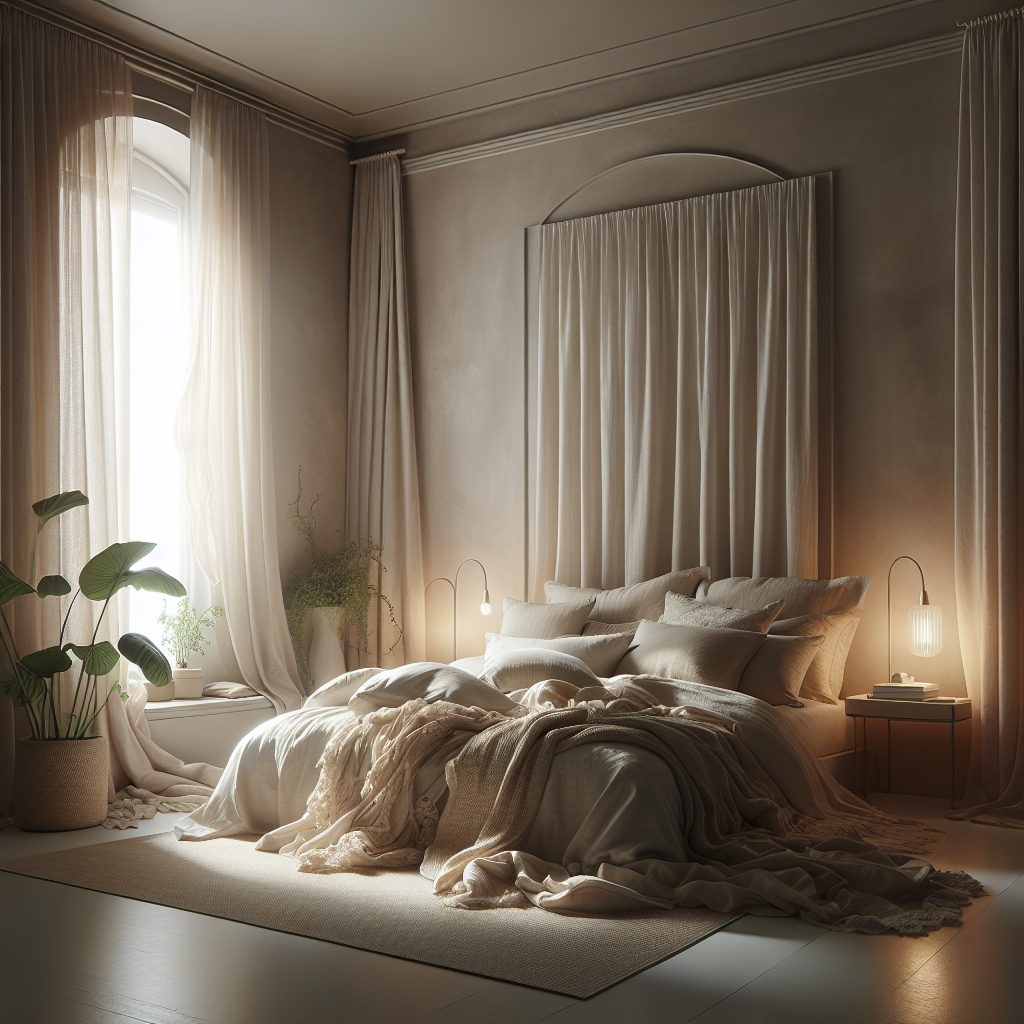Introduction
Sleep is a foundational aspect of health, yet many struggle to find restful slumber in their own homes. Designing your living space for better sleep quality isn’t just about aesthetics; it involves a blend of functionality, environment control, and psychological comfort. In this article, we delve into how you can optimize your home for a better night’s sleep.
The Role of Light in Sleep Quality
Light exposure is one of the most significant environmental factors affecting sleep. Our bodies’ circadian rhythms, which regulate sleep-wake cycles, are highly sensitive to light changes. To harness this for better sleep, consider dimmable lights in your bedroom. Installing blackout curtains can also block out unwanted light during the night, especially if you live in an urban area with significant nighttime light pollution.
Optimal Bedroom Temperature for Sleep
Temperature plays a crucial role in how well you sleep. The ideal bedroom temperature for most people is around 65 degrees Fahrenheit (18.3 degrees Celsius). Consider investing in a smart thermostat that can adjust your room’s temperature automatically throughout the night to optimize sleep quality.
Choosing the Right Bed and Bedding
Your bed is the centerpiece of sleep quality. A mattress should provide the right balance of support and comfort, tailored to your body type and sleep preferences. Memory foam or hybrid mattresses are popular choices for their ability to conform to the body’s shape and reduce pressure points. Additionally, choose breathable, natural fiber bedding such as cotton or bamboo to enhance comfort.
Minimizing Noise Distractions
Noise is a significant disruptor of sleep. If you live in a noisy neighborhood, consider soundproofing your bedroom. White noise machines can also mask disruptive sounds with soothing, consistent audio. Another simple strategy is to use earplugs to block out unwanted noise.
The Impact of Colors and Decor
The color palette of your bedroom can significantly affect your sleep. Soft, calming colors like blues, greens, and light grays are known for their relaxing properties. Avoid stimulating colors such as bright reds or oranges in sleep spaces. Additionally, keep your bedroom decor minimal; a cluttered room can lead to a cluttered mind, which may impede your ability to fall asleep.
Technological Distractions and Sleep
In the age of smartphones and tablets, technology often finds its way into our bedrooms. However, the blue light emitted by screens can interfere with the production of melatonin, the hormone that signals our brain it’s time to sleep. Consider setting a technology curfew an hour before bed or use devices with night settings that minimize blue light exposure.
Natural Elements and Their Role in Sleep
Incorporating natural elements into your bedroom can enhance sleep quality. Plants not only improve air quality but also add a soothing, natural aesthetic that can help calm the mind. Consider easy-to-care-for plants such as snake plants or peace lilies, which have been shown to improve indoor air quality.
Conclusion
Designing your home for better sleep quality involves more than just aesthetic choices; it’s about creating an environment that supports your sleep from multiple angles. By controlling light and noise, optimizing your bedroom’s temperature, choosing the right bedding, minimizing technological distractions, and incorporating calming colors and natural elements, you can transform your sleep experience.


